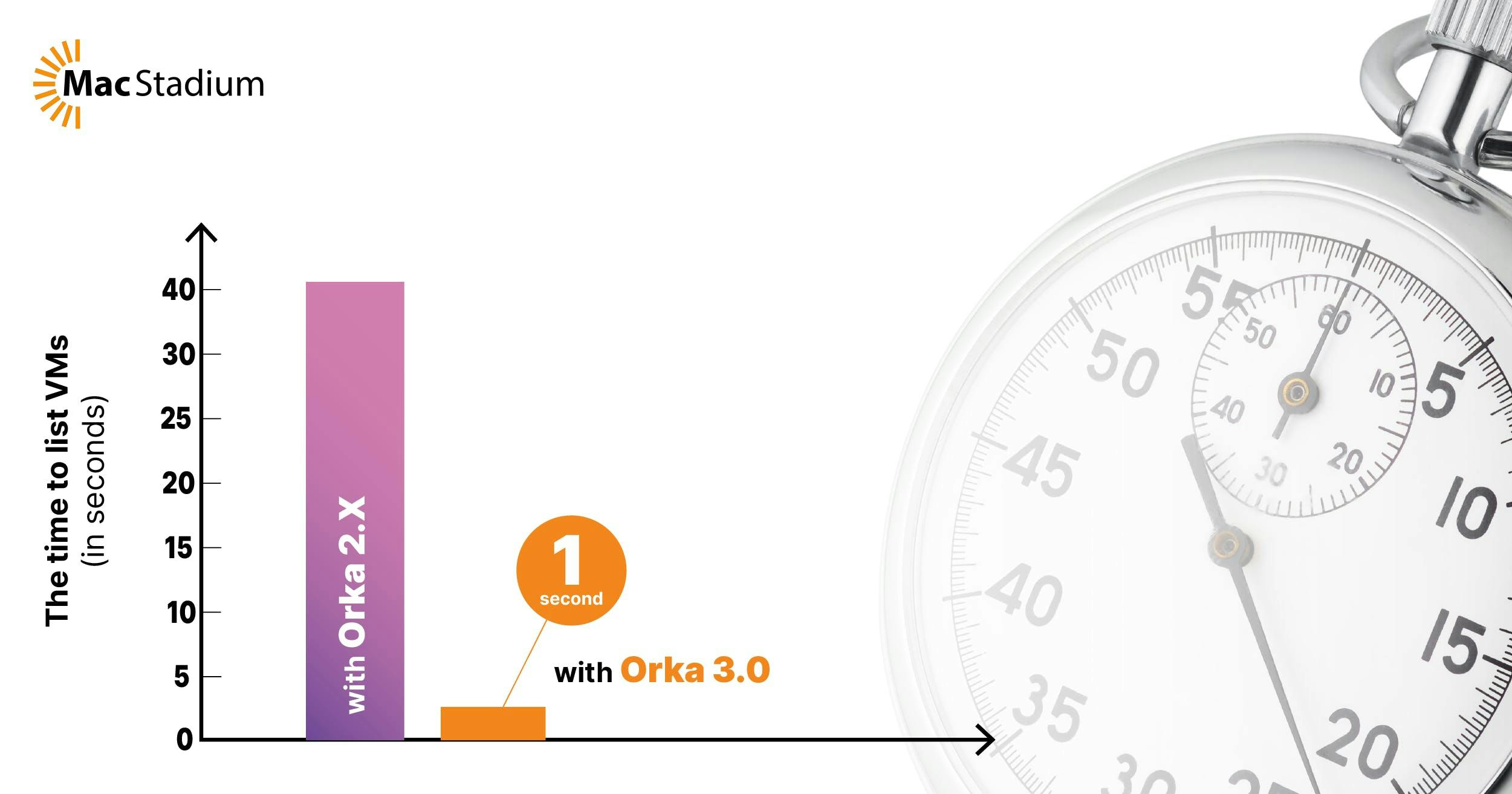It’s time to celebrate – Orka 3.0 is here.
Orka 3.0 is here with tons of new functionalities, including:
- Updated user management
- Updated CLI
- New API
- ARM image improvements
- Kubernetes native way of managing Mac VM resources
Orka 3.0 represents a complete rewrite that leverages and exposes numerous Kubernetes features to ensure the newest components deliver value with the addition of several long-awaited features.
Enclosed is a brief overview of these new features – but stay tuned for more in-depth articles on each.
New User Management
Some of the most requested features we get are:
- The ability to use your MacStadium Portal users in Orka
- The ability to share users between clusters
Prior to this update, Orka had its own independent user management system and neither of these were possible. Orka 3.0 introduces centralized user management inside the MacStadium Portal. Portal Admin users are automatically Orka cluster admins. And Portal tech users are Orka dev users.
Additionally, Orka 3.0 introduces “Service Accounts.” Users no longer need to use their own credentials to run automations. Instead, they can set up service accounts and use dedicated service account credentials.

New CLI
Orka 3.0 features a completely new CLI called orka3, purposely designed to streamline automation, providing in-depth help for each of the commands and built-in autocomplete for Zsh, Bash, Fish, and PowerShell.
The new CLI is significantly faster. The old CLI took 40 seconds to list 250 VMs. The new CLI does that in 1 second.
Most importantly, the new CLI communicates directly with the Kubernetes API, enabling High-Availability as the Kubernetes API has three replicas running across each of the control plane nodes.
New API
Orka 3.0 features a completely new API, complete with its own Swagger definitions, making it extremely easy to develop against that API.
ARM Image Improvements
Orka 3.0 addresses the requests related to ARM images, including:
- The ability to share images between clusters
- Faster uncached ARM deployments
- The ability to cache more ARM images per host
The first big improvement in this release is that Orka allows publishing and pulling images to and from any OCI image registry. In other words, you can publish images to GitHub Container Registry, DockerHub, etc… And you can pull those images directly into your Orka cluster.
Additionally, ARM images are now thin-provisioned, reducing the previously default 90GB image on the host disk down to only 15GB. That’s because Orka treats ARM images as sparse files and applies optimizations that create two major improvements:
- Image caching is significantly faster. For example, default 90GB images decreases from 5 min to 1 min
- Images can now be cached on the hosts as they require less space. For example, default 90GB images now take 15GB on the host
Finally, every ARM image can be thin-provisioned. By default, new images are thin-provisioned. However, you can convert an old image by saving it or committing the existing image.
Manage Orka Resources with Kubernetes Tooling
Orka resources are now native to Kubernetes, allowing you to manage resources (nodes, images, VMs, configs, etc.) with kubectl.
For example, here is how you get all Orka VMs:
“kubectl get vm --namespace orka-default”
Performance Improvements
Performance improvements abound in Orka 3.0. For example, previously, you could deploy 40 VMs at the same time within a minute. Deploying more than 100 VMs usually took 10-20 min. Now, you can deploy 300 VMs within a minute and 600 VMs within 3 minutes.
Backwards Compatibility
These new features will be available to any new Orka customer. However, we will leave no customer behind or force upgrades. When you are ready to upgrade to 3.0, the built-in backward compatibility will allow your automations to continue working for your existing users, CLI, API, and your integrations, giving you time to migrate to the new services provided by Orka.
TL;DR
The ground-breaking new features of Orka 3.0 are truly remarkable. Users can now launch macOS VMs faster than ever than ever before with thin provisioned OCI images. And better yet – Orka 3.0 is now K8s native.
Want to dive deeper into Orka? Check out the product page!
Share this article
Orka, Orka Workspace and Orka Pulse are trademarks of MacStadium, Inc. Apple, Mac, Mac mini, Mac Pro, Mac Studio, and macOS are trademarks of Apple Inc. The names and logos of third-party products and companies shown on the website are the property of their respective owners and may also be trademarked.
©2025 MacStadium, Inc. is a U.S. corporation headquartered at 3340 Peachtree Rd NE, Suite 2330, Atlanta, GA 30326. MacStadium, Ltd. is registered in Ireland, company no. 562354.